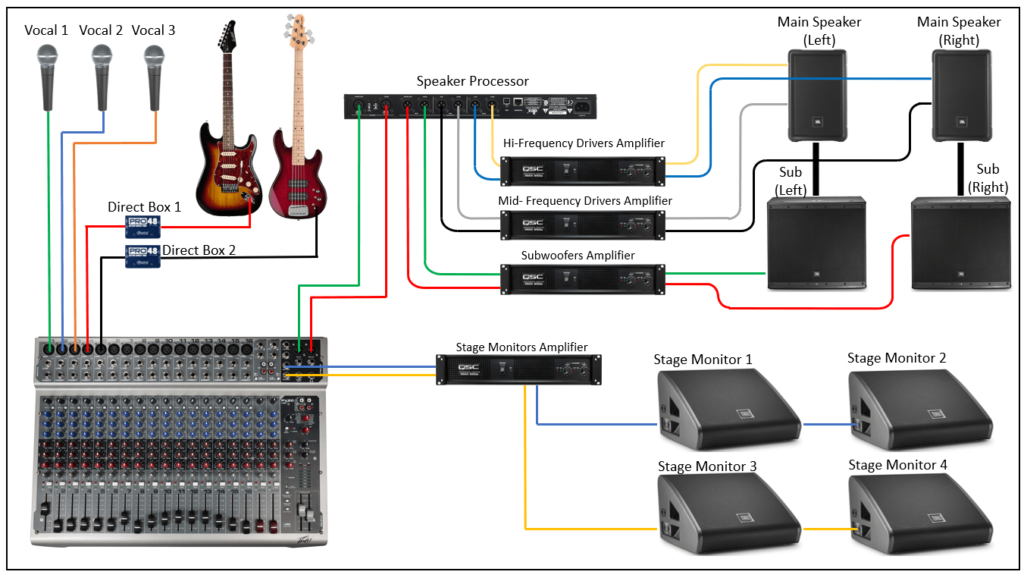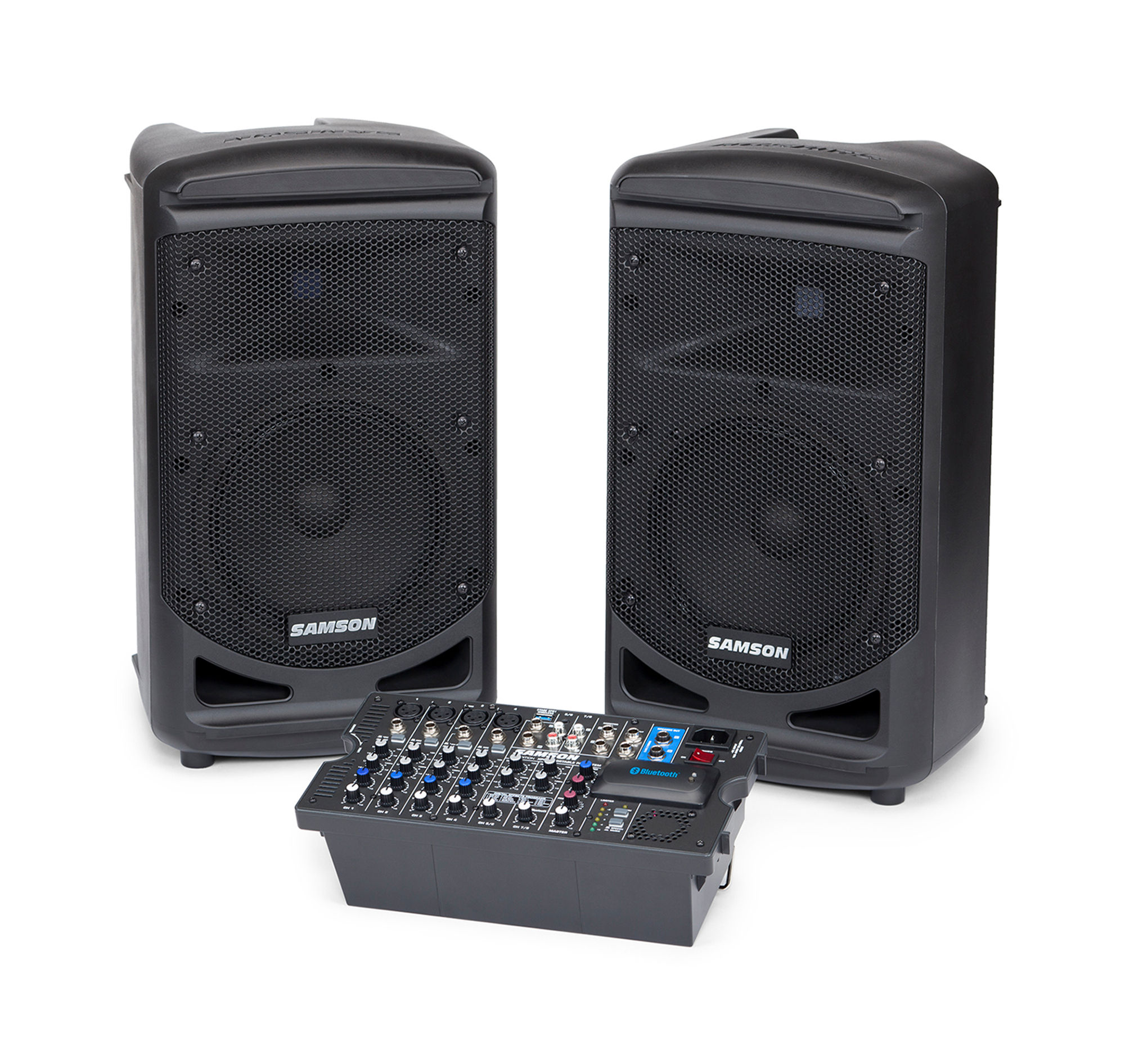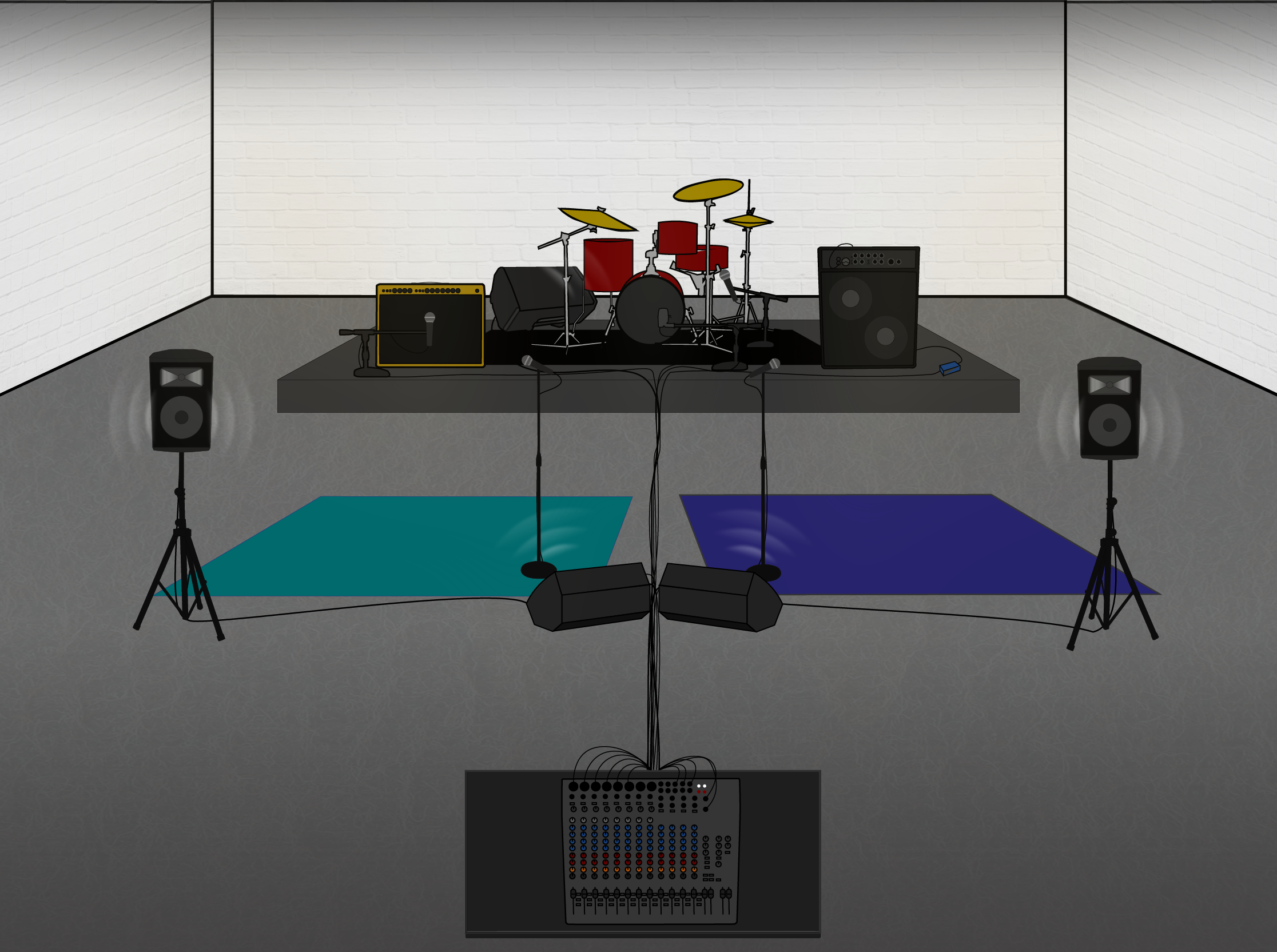Boost Your Communication with an Advanced IP PA System Today
Boost Your Communication with an Advanced IP PA System Today
Blog Article
Comprehensive Overview to Public Address Solutions
Public address (PA) systems are commonly experienced in different tasks such as office buildings, property complexes, commercial office buildings, schools, health centers, train terminals, airport terminals, bus factories, financial institutions, and stations. This guide will give a detailed review of systems.
Elements of a System
Regardless of the kind of PA system, it generally contains four almosts all: resource devices, signal amplification and processing tools, transmission lines, and speaker systems.
Resource Devices
Music Players: Utilized for history music.
Microphones: Includes zone-select microphones and common microphones.
Voice Storage Space Instruments: For storing service and emergency program messages.
Signal Processing and Amplification Equipment
Audio Signal Processor: Manages audio signal settlement, depletion, equalization, etc.
Pre-Amplifier: Pre-amplifies audio signals.
Power Amplifier: Magnifies audio signals to drive speakers, offering constant voltage output.
Transmission Lines
The solution administration platform software permits the monitoring facility to put in central administration over the program and intercom communication systems. It assists in real-time gadget standing tracking, fault diagnosis, and troubleshooting, solidifying system reliability and consistency.
Speakers
Ceiling Speakers: Indoor, flush-mounted in the ceiling, constant voltage or consistent resistance.
Wall-Mounted Audio speakers: Wall-mounted, continuous voltage or constant insusceptibility.
Column Speakers: Free-standing, ideal for indoor or outside usage.
Horn Audio speakers: High level of sensitivity, appropriate for outdoor or indoor usage.
Concealed Speakers: For outside setups like parks or gardens, made to resemble stumps, mushrooms, or rocks.
Audio Technical Requirements of PA Equipments

In day-to-day atmospheres, typical sound stress degrees are:.
• Workplace noise: 50-60 dB.
• Typical discussion: 65-70 dB.
• Textile manufacturing facility noise: 110-120 dB.
• Little quality shooting: 130-140 dB.
• Large jet aircraft noise: 150-160 dB
Signal-to-Noise Ratio (SNR)
SNR gauges the proportion of the signal voltage to sound voltage, revealed in decibels. A higher SNR suggests much less sound and much better audio top quality. Typically, SNR needs to be at the very least 63 dB, with high-fidelity speakers reaching over 110 dB.
Input Sensitivity
This is the minimal input voltage called for to achieve the rated outcome power. Higher sensitivity suggests less input signal is needed. Normally, power amplifiers have an input sensitivity of 0.775 V (0 dB) to 1.5 V (+6 dB)
Maximum Outcome Power (Audio Speakers)
The optimum power a speaker can take care of simply put bursts without damages.
Rated Power (Speakers)
The continuous power a speaker can deal with without distortion, determined in watts (W) Ranked power is an average worth, and audio speakers can manage peak power approximately 2-3 times the rated power.
Constant Voltage vs. Consistent Insusceptibility Outputs
Constant Voltage (70V or 100V)
Makes use of voltage to drive audio speakers, permitting longer transmission distances and numerous speakers in parallel. However, sound top quality is a little substandard contrasted to continuous resistance systems.
Power amplifiers should match the voltage score of the speakers to avoid damages.
Consistent Insusceptibility (IP Paging System).
Uses existing to drive speakers, providing much better sound high quality but limited transmission range (as much as 100 meters)
Impedance matching is important; for example, an 8Ω amplifier ought to be matched with 8Ω audio speakers
Selecting and Configuring Speakers
Speaker Option
Indoor Spaces with Ceiling: Use flush-mounted ceiling audio speakers without a rear cover.
Indoor Spaces with Only a Structure: Usage ceiling audio speakers with rear covers or hanging ball-type audio speakers.
Exterior Locations: Usage weatherproof column speakers or horn speakers.
Parks and Gardens: Usage masked audio speakers made for visual objectives.
High-End Interiors: Use classy hanging speakers.
Fire-Safe Locations: Use fireproof audio speakers with covered layouts.
Speaker Setup
Audio speakers must be distributed uniformly across the service location to make sure a signal-to-noise ratio of at least 15 dB. Normal history noise levels and advised audio speaker positioning are:.
High-end office corridors: 48-52 dB.
Large mall: 58-63 dB.
Hectic street areas: 70-75 dB.
Speakers must be placed to ensure a sound pressure degree of 80-85 dB in many atmospheres. Ceiling audio speakers must be spaced 5-8 meters apart, or 8-12 meters for background songs only. For emergency situation broadcasts, ensure that no area is greater than 15 meters from the local speaker.
Amplifier Sizing
Computation Technique:
For solution and business PA systems: P= K1 × K2 × ΣPo where:.
P = Overall amplifier outcome power (W)
K1= Line loss payment aspect.
K2 = Aging variable (1.2-1.4)
ΣPo = Overall power requirement.
For fire alarm system systems, make use of 1.5 times the complete variety of audio speakers.
Instance Calculation:
For a history songs system with 10 speakers at 20W each: P= 1.26 × 1.2 × 10 × 20W × 0.7= 211W.
Final amplifier ability should be 1.3 times this worth: 211W × 1.3= 274W
Installation Demands
Audio Speaker Positioning
Audio speakers need to be uniformly and tactically distributed to fulfill coverage and audio high quality needs.

Small systems can use regular power electrical outlets, while systems over 500W call for a devoted power supply. Power should be secure, with automatic voltage regulatory authorities if required. The power supply should be 1.5-2 times the devices's power intake.

Use copper-core cable televisions for signal transmission. Cables need to be protected and routed via suitable conduits, preventing interference from electric lines. Make certain appropriate splitting up between power and signal lines.
Lightning Security and Grounding
PA systems call for correct grounding to stop damage from lightning and electrical interference. Usage committed basing for equipment and make certain all grounding actions fulfill safety and security requirements.
Setup Quality
Cable Television and Port Top Quality
Use high-grade wires and connectors. Make sure connections are secure and appropriately matched to prevent signal loss or disturbance.
Speaker Links
Preserve right stage placement between speakers. Usage trusted approaches for connecting cables, such as soldering or terminal blocks, and safeguard links from ecological damages.
Grounding and Safety And Security Checks
Validate all grounding is correctly set up and check the security of power connections and devices setups. Perform detailed assessments prior to settling the setup.
Checking and Modification
Evaluate the whole system to ensure all elements function appropriately and fulfill layout specifications. Readjust settings as needed for optimum efficiency.
Workmanship Demands for Public Address Systems
Construction Top Quality Demands
The quality of building and construction in a public address (PA) system project is crucial to fulfilling style specs and customer demands. Consequently, it is important to strictly adhere to the style strategies, abide by standards, prevent rework and hold-ups, and keep in-depth building and construction logs. Key areas to focus on include:
Cable Option and Setup
Throughout the building of a PA system, attention is often concentrated on devices, however the option of transmission cords is additionally important for attaining acceptable IP Paging Microphone sound top quality. Premium broadcasting equipment (amplifiers, audio speakers, and so on) is needed, yet the high quality of the transmission cable televisions also affects audio quality.
Identical audio speaker cords have inherent capacitance in between the wires, which is not appropriate for long-distance transmission as it can attenuate high frequencies and cause vague or muffled high sounds. Twisted pair cable televisions can properly overcome this problem and must be made use of for long-distance transmission.
Protected twisted pair cables protect against electromagnetic interference and enhance wire durability, making them suitable for long-distance installments. The size of the cords additionally affects efficiency. Thicker cable televisions decrease transmission loss yet rise cost and installation difficulty. The selection of cable televisions ought to balance efficiency and price, adhering to these standards:.
Usage well balanced links for all signal links between PA system devices, with soldered endpoints.
For systems with smoke alarm features, use fire-resistant or flame-retardant copper-core wires.
Cables should be routed through steel channels or wire trays, and must not share trays with illumination or power lines. The flexing span of cable televisions should be no less than 15 times the cable diameter, and power cable televisions should be divided from signal and control cords.
Attaching Audio Speakers and Program Lines
When attaching audio devices, it's essential to make sure stage uniformity between audio speakers and broadcast lines. Phase disturbance in between audio speakers can cause substantial variants in audio stress degrees, causing unequal sound distribution. For that reason, adhere purely to wiring tags and standard link methods.
3 usual link techniques in PA systems are:.
Twisting Technique: Removing insulation from cords, turning them with each other, and securing them with tape or clamps. This technique is easy however may weaken in time.
Screw Terminal Method: Removing insulation and placing wires into screw terminals, then tightening up the screws (IP Paging System). This method is frequently made use of.
Soldering Technique: Removing insulation, twisting cords, and soldering them with each other, then covering with tape. This approach is a lot more trusted and ideal for high-demand or moist atmospheres
Despite the method, usage tinned wire to assist in soldering and prevent rust. Use PVC or steel conduit to safeguard subjected cables from joint boxes to audio speakers.
System Grounding
To minimize interference from the power system, different protective and functional groundings should be established. Recommended practice is to install different copper strips for weak and strong electric systems in their respective vertical shafts.
The total grounding resistance ought to not surpass 1Ω.
Building And Construction Assessment
As a result of the complexity of PA systems with various links and elements, thorough evaluation is essential. General inspections ought to include:
Security checks of equipment installment.
Verification of power line arrangements.
Accuracy of links and discontinuations.
Unique interest needs to be offered to gadget settings, such as resistance matching turn on speakers. Validate that buttons are set properly to avoid damages. Examine the output selection turns on signal source tools, setups on signal handling devices, amplifier connecting buttons, and power supply setups (SPON Communications).
As soon as these actions are validated, plan for tools debugging. Considering that debugging approaches differ based upon details task needs, they are not covered thoroughly below
Quality Records
Certificates, technical specifications, and documentation for audio speakers, units, transformers, controllers, electrical outlets, amplifiers, sound processing equipment, shielded cable televisions, etc
Pre-installation, covert examination, self-inspection, and common inspection records.
Records of design adjustments and final drawings.
Quality examination and examination records for channel and cable television installment.
Records of PA system installation and debugging.
Significant Setup Requirements
Equipment Installation Order
PA system devices is usually installed in closets. For simpler systems, a 1.0-meter closet may be sufficient. Place often used tools like the main broadcast controller on top for very easy access. For even more facility systems with a 2.0-meter cupboard, placement often utilized devices between 0.8 to 1.5 meters for convenience.
Devices Link Order
Connect the computer to the main broadcast controller. Audio lines generally attach directly to the input of the preamplifier or the first channel of the mixer. The mixer outcomes are distributed per amplifier, and if utilizing pure power amplifiers, connect to the INPUT sound input. Amplifier outputs then attach to addressable terminals, zone control boxes, or area selectors, and lastly to the audio speakers.
Circuitry Considerations
For extensive electrical wiring, separate sound and high-voltage line utilizing various makers' wires can aid stay clear of confusion. Strategy wiring in advancement to prevent missing out on cords, which would certainly require renovating the entire setup.
Power Supply

Tools Option
Do not count only on look; take into consideration customer evaluations and market track record. Products from reliable manufacturers with extensive testing and experience are generally more reliable.
Wireless Microphones
For cordless microphones, pick UHF versions for far better variety and signal stability. Choices include one-to-one, one-to-two, one-to-four, or one-to-eight configurations. For mobile usage, choose headset microphones. Lavalier microphones might have poorer audio top quality and are prone to responses.
Link Cords
Use solid links for long life and avoid counting on adapters, which can create loose links with time. Appropriately solder links to guarantee toughness and convenience of upkeep.
Cabinet Setup
If making use of deep power amplifiers, guarantee the cupboard dimensions (e.g., 600x600mm) work with the devices. Procedure cabinet depth and spacing before installation.
Proper planning, top notch equipment, and careful installation and maintenance are vital to accomplishing optimal audio high quality and reliable performance in a system.
Generally, SNR must be at least 63 dB, with high-fidelity audio speakers reaching over 110 dB.
Speakers need to be positioned to guarantee an audio stress level of 80-85 dB in a lot of settings.When connecting audio tools, it's crucial to make sure phase consistency in between audio speakers and broadcast lines. Stage disturbance between audio speakers can cause substantial variants in sound stress degrees, leading to irregular sound distribution. Amplifier outcomes after that attach to addressable terminals, area control boxes, or zone selectors, and lastly to the speakers.
Report this page